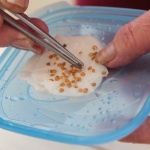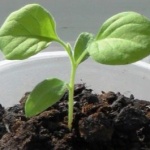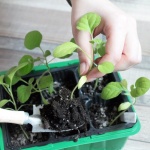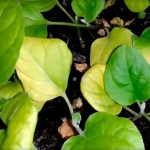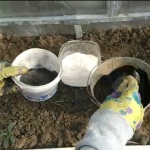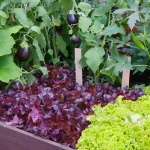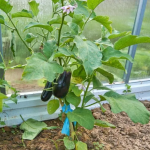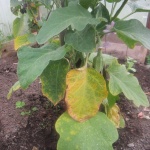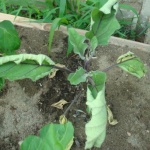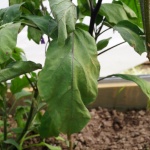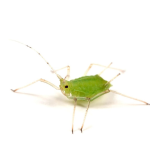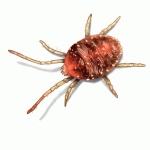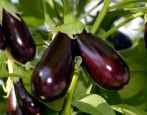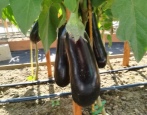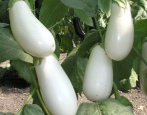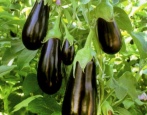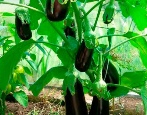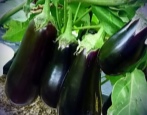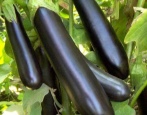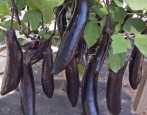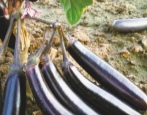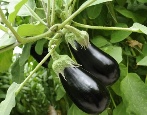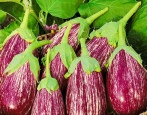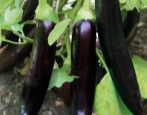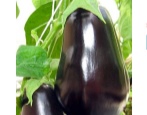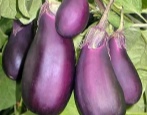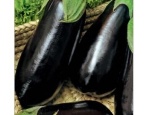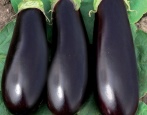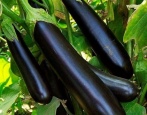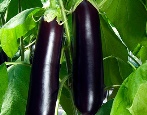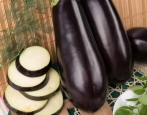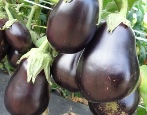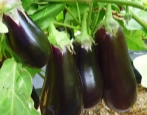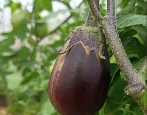
- Authors: Lukyanenko A.N., Dubinin S.V., Dubinina I.N.
- Year of approval: 2007
- Bush height, cm: 60-75
- Fruit shape: aligned, cylindrical
- Fruit weight, g: 200-220
- Yield: high yielding
- Fruit color: dark purple
- Ripening terms: early
- Pulp (consistency): dense
- Color of the pulp: white
Maria is an eggplant variety bred by Russian breeders and approved for use in 2007. This variety quickly gained popularity among gardeners. Let's try to figure out why he is so good and what are the basic rules of his agricultural technology.
Description of the variety
It is a high yielding variety that is grown through seedlings. In general, cultivation is not fundamentally different from the characteristics of growing other varieties, although there are several nuances. So, this is a less demanding variety that will develop well both in the open field and in a greenhouse or under a film cover.
Characteristics of the appearance of plants and fruits
The bush is semi-spreading, reaches a height of 60-75 cm, has a stem without anthocyanin coloration, but with a light down, as well as medium-sized green leaves. Fruits develop in a flattened cylinder shape, reach 25-30 cm in length, weight - about 200-220 g. The surface of the fruits is dark purple, slightly glossy, and a dense white pulp is hidden inside.
Purpose and taste
Maria has a good pleasant taste, no bitterness is felt when consumed. This eggplant is suitable for all types of processing, as well as for canning or making homemade meals.
Ripening terms
From the appearance of the first shoots to fruiting, it usually takes 95-100 days, which is typical for varieties with an early ripening period.
Yield
As already mentioned, the Maria variety has a high yield. So, under the film, the plant gives about 5 kg of vegetables from each square meter.
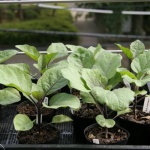
To get a tasty and bountiful eggplant crop, you must first grow strong and healthy seedlings. This culture is considered very capricious, therefore, you need to take care of seedlings when growing at home as correctly and carefully as possible.
Landing scheme
Sowing is carried out in April, it will be possible to plant seedlings in a summer cottage in early June. Growing seedlings is as follows:
- process the seeds in a solution of potassium permanganate and hold them for a day in a nutrient solution;
- sow seeds in containers, moisten the soil and remove the container under the film;
- when sprouts appear (after 7-10 days), remove the film and place the container in a bright place.
A very important point when growing seedlings is maintaining the temperature. At the sowing stage, the thermometer should show + 20-25 degrees. When the container is freed from the film, the temperature should be about +17 degrees, and after a week it must be raised again to its original values.
It is also worth considering that this variety does not tolerate transplanting well, therefore it is recommended to sow the seeds in separate cups in advance, so that later there will be a possibility of transplanting with an earthen clod: this way the plant will survive less stress.
Plant your seedlings in a sunny spot. Young bushes will feel most comfortable in fertile loose soil. Before planting, the wells should be watered abundantly with water, after transplanting the earth around should be tamped and mulched with sawdust. The bushes are planted according to the 50x60 cm scheme.
Growing and care
When growing the Maria variety on the site, pay attention to the following points.
- Top dressing. When applying fertilizers, do not spare the nutrient solution: each bush needs 500 ml of the mixture. It is important that the top dressing does not fall on the leaves, otherwise it can provoke a burn.After fertilization, the bushes must be well watered.
- Watering. Irrigation is carried out every 3-4 days. In dry summers, the amount of watering should be increased. It is important to avoid crusting, so loosen the soil after each wetting. Be careful when hilling as Mary's damaged roots tend to heal slowly.
The bushes of the presented variety are semi-sprawling, which means that the formation stage can be skipped, however, experienced summer residents still recommend at least tying them up, since the variety is characterized by a bountiful harvest.
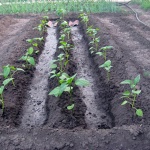
Planting eggplant is one of the most important stages in growing. When choosing a place for eggplants on your site, it is important to remember that this culture should be in warm soil, constantly illuminated by the sun. The plant is also very fond of spacious, open spaces, since its roots can grow over sufficient areas.
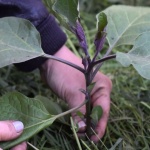
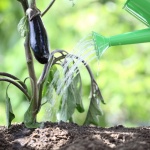
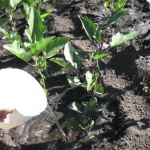
Disease and pest resistance
Maria tolerates adverse weather conditions well, she is almost uninteresting for harmful insects, however, if the growing conditions are not followed, this variety can become a victim of some diseases, for example, late blight, anthracnose, white rot.
In all cases, fungicides will help save the plant, but it is easier to prevent diseases than to cure them. To do this, carefully select seeds for sowing, disinfect the greenhouse soil before transplanting seedlings, weed the garden well and maintain moderate humidity if the eggplant grows in a greenhouse.

Eggplant is one of the most demanding crops. For its successful cultivation, it is necessary to create optimal conditions, as well as to carry out prevention and fight against diseases and pests. Eggplant often infects both fungal and viral diseases. If treatment is not started on time, you can completely lose the crop.
